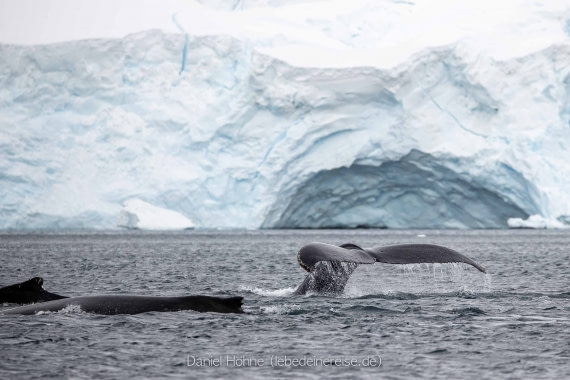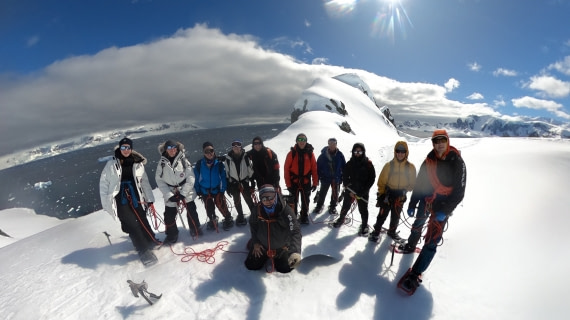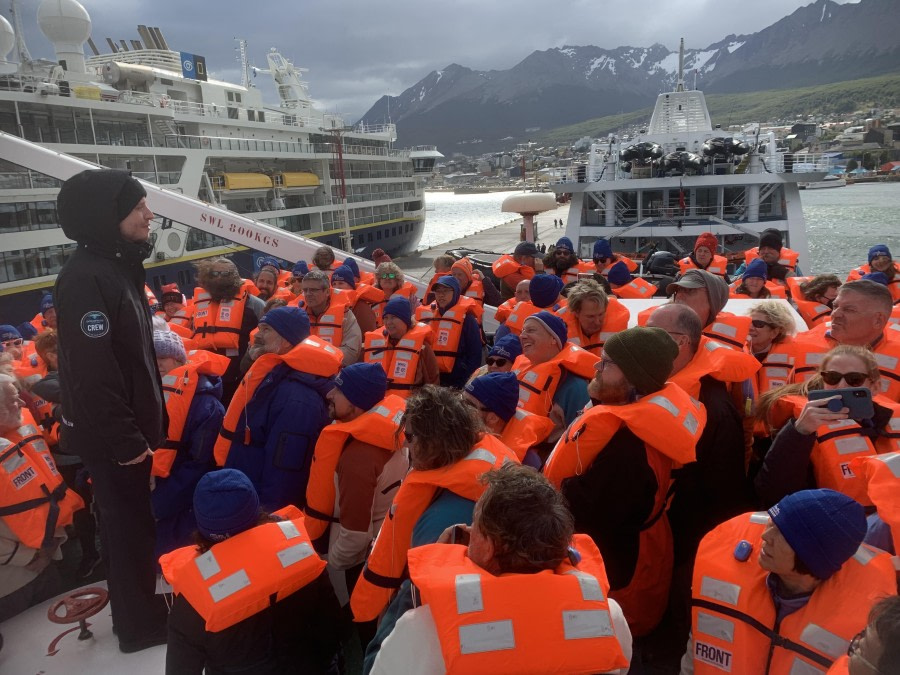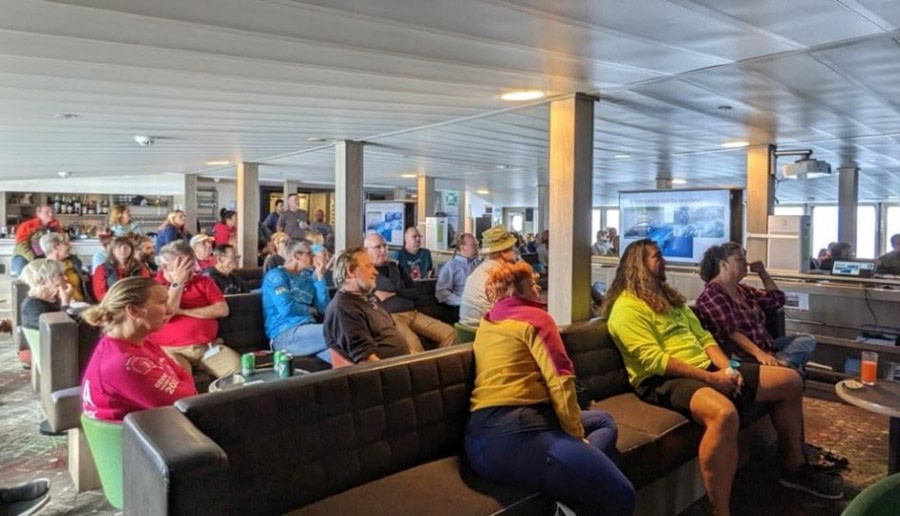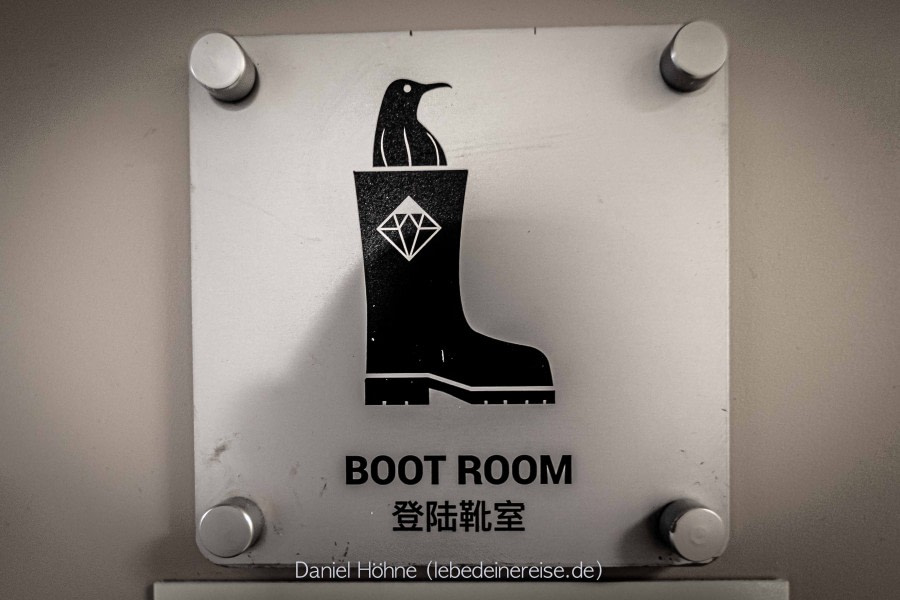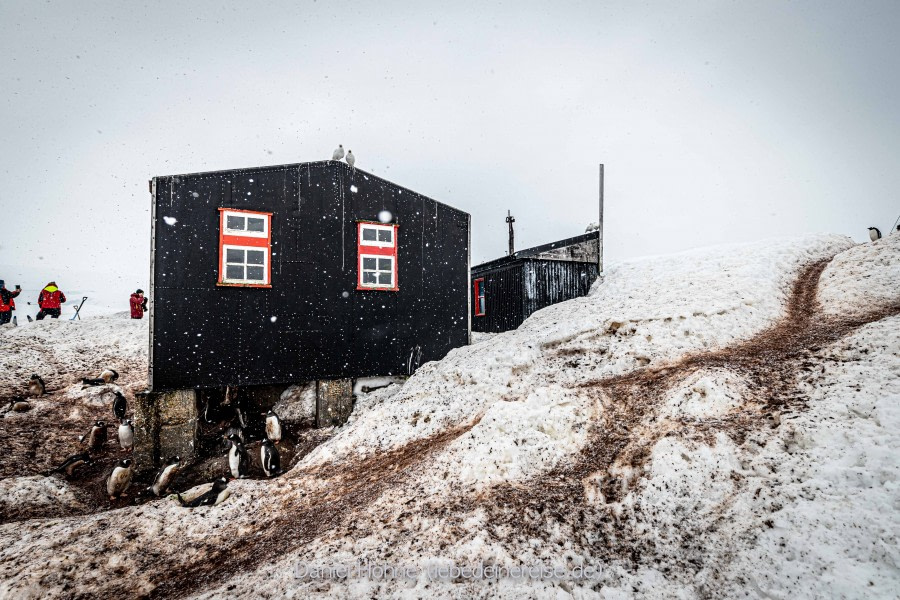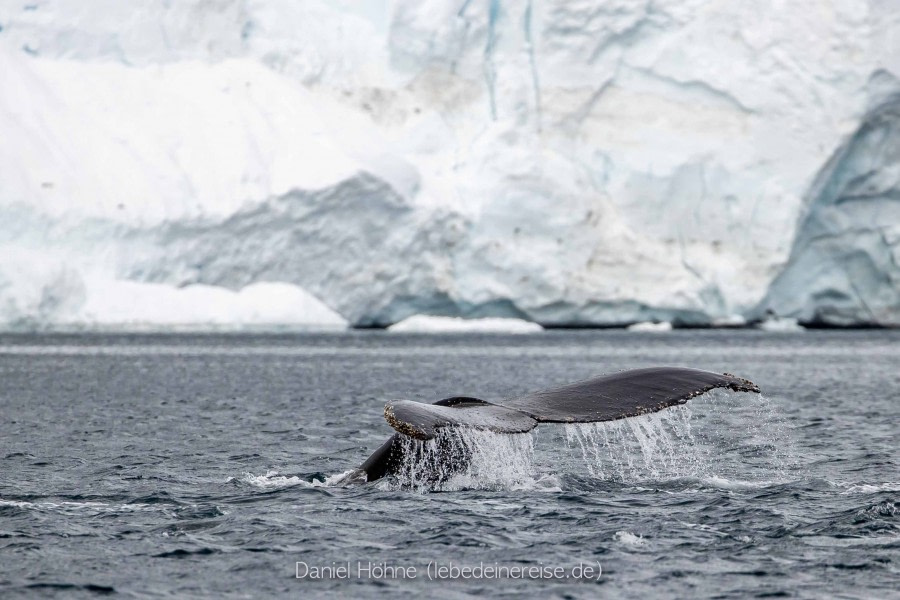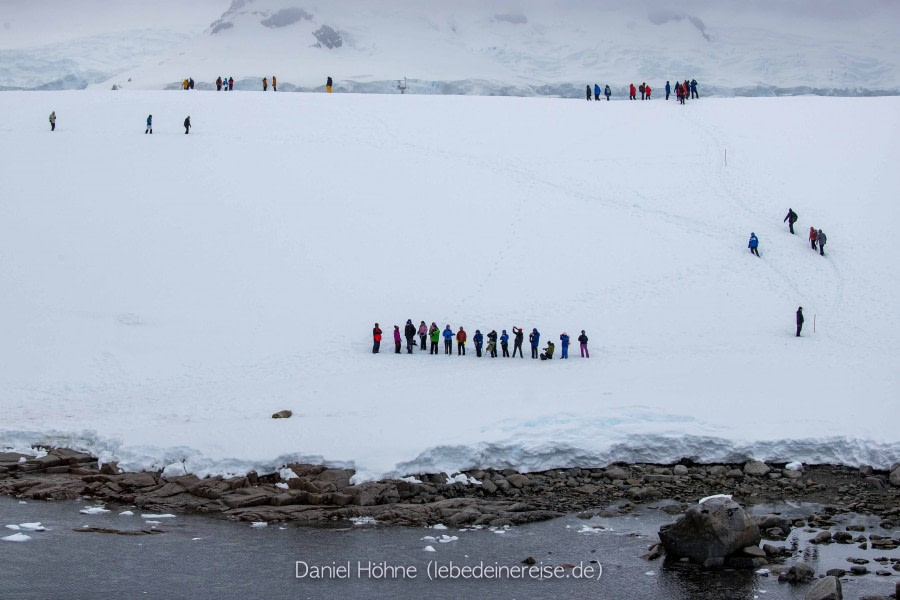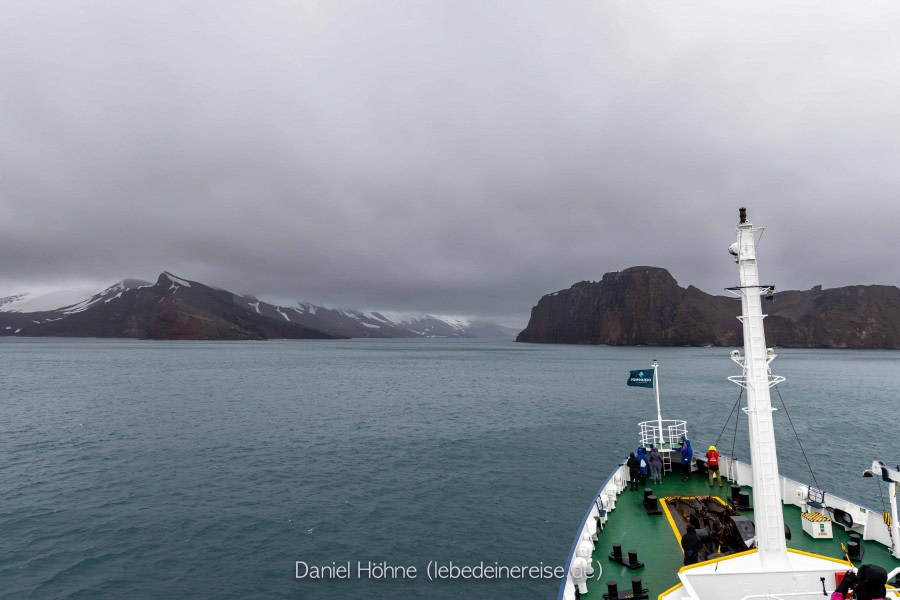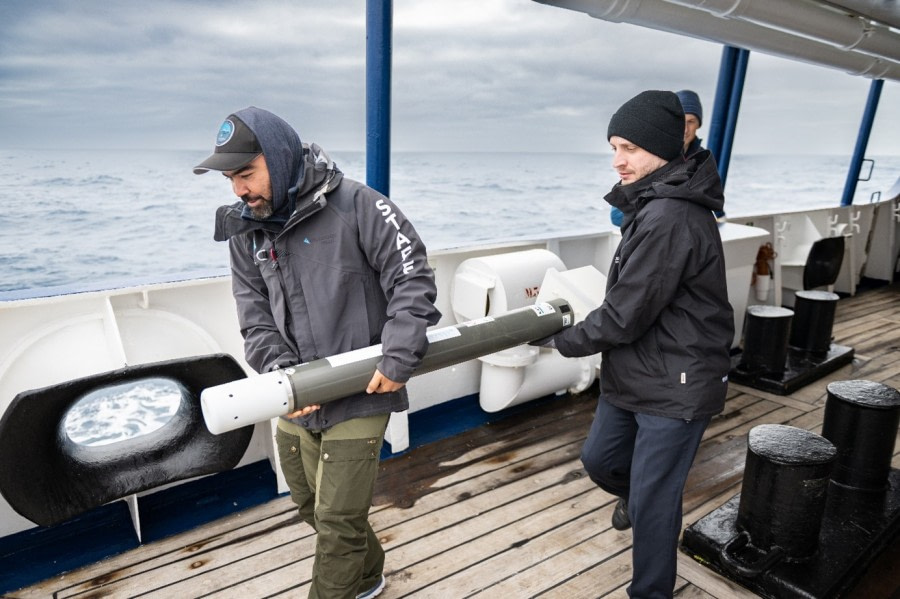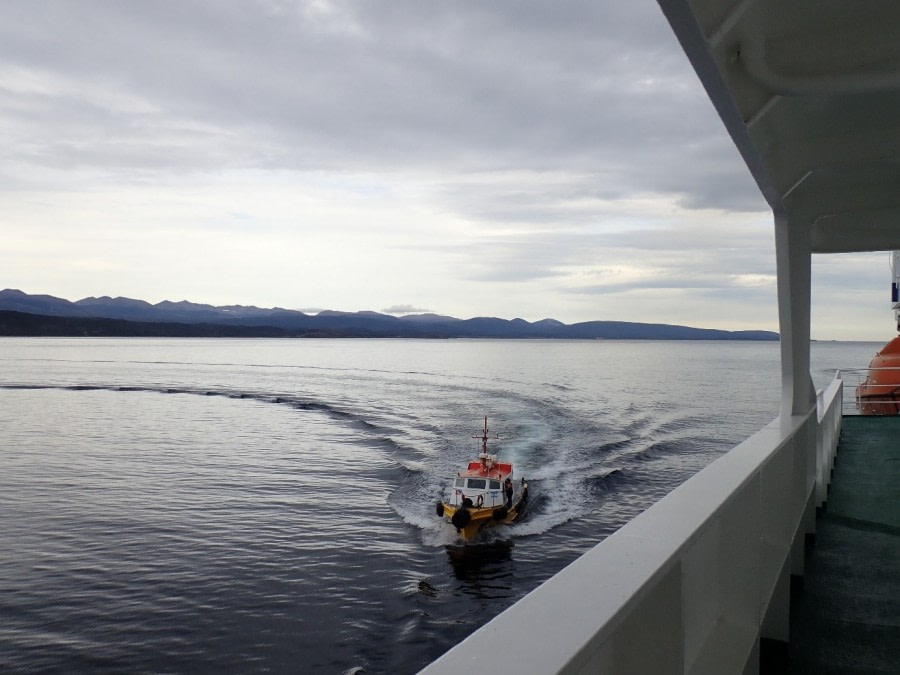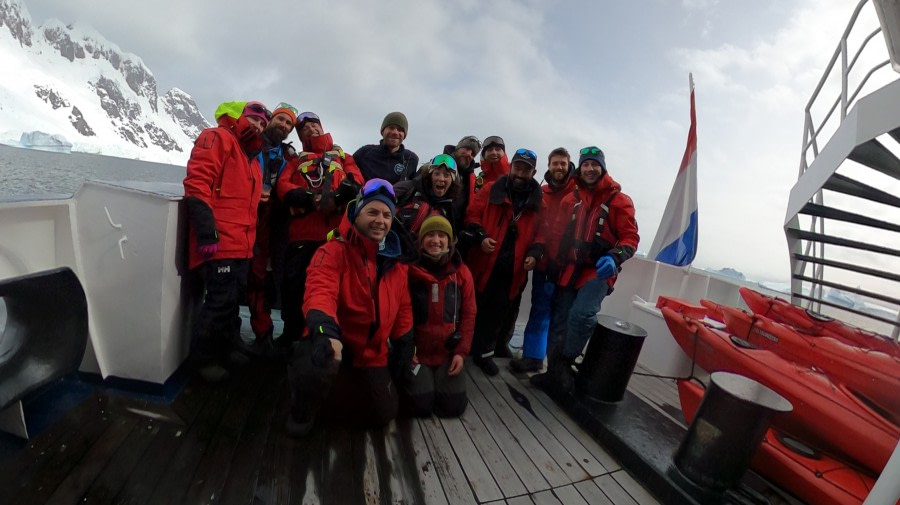| Date: |
13.12.2022 |
| Position: |
64°39.9’S / 062°39.1’W |
| Wind: |
NE3 |
| Weather: |
Cloudy |
| Air Temperature: |
+1 |
The excitement began as soon as we looked outside our portholes. We could see large pristine white ice bergs glistening in the morning light. Occasional gentoo penguins passing by, jumping out the water as they race along in their little groups.
At 7am we received our wake-up call from Eduardo, our Expedition Leader, over the PA system. We jumped into action, full of enthusiasm for our first full day of landings in Antarctica! We enjoyed a lovely breakfast with fresh fruit, cooked breakfast, pastries, and fresh bread all available, prepared by our galley team.
For the first day of landings many of us were still working out where the zodiac boarding area is and getting familiar with the layout of Plancius and we waddled about in all our layers, ready for the cold Antarctic climate. The mountaineers were first off, leaving at about 8am once they had been ‘dressed-up’ ready for safe traveling while ashore. This outing was to George’s Point on Rongé Island, directly adjacent to where the main outing was to on Orne Island.
Orne Island sits at the entrance to Errera Channel which separates Rongé Island from the Arctowski Peninsula on the mainland. The views from this island are magnificent, with high mountains all around densely laden with snow and ice. The sound of the penguins was new to many of us. From the zodiacs many people also noticed the crackling sound of the ice. This occurs as the air bubbles burst and escape from the ice as it melts. From the landing site we had a small scramble across a rocky platform before making it to the snow. Although this was not so challenging terrane, having adapted to the motion of the ship this uneven stationary surface took a bit of getting used to! Once we were up on the snow, we had to put snowshoes on. This gives our feet a larger surface area so that we are less likely to sink into the deep snow. At this time of year, early in the season, there is a lot of fresh snow so snowshoes are often required.
We walked up to a high point on the island overlooking a penguin rookery. The gentoo penguins here had not made their nests yet due to the thick snow cover still present at this site. Some of the penguins and skuas were mating suggesting that the reproductive cycle of the birds is delayed compared to what is typically around here.
On the zodiac trip returning to the ship, some of us were able to see weddell seals resting on the ice. We were treated to some beautiful conditions with the sun shining and lighting up the sharp undulations in the landscape. We have certainly started on a high with superb weather, not much wind and plenty of wildlife.
We had a fun lunch of burgers, chips and salad catching up with each other and sharing what we had all been up to in the morning. The afternoon activities started shortly after with a landing at Cuverville Island. This island has an impressive big cliff on one side of the higher elevation area in the centre. On the lower ground we could observe the penguins at work, moving pebbles around: stealing, loosing and replacing. This almost becomes more entertaining the more you watch them as you get to see the personalities of the gentoo penguins. We are also getting more familiar with their features now as we can see the slight difference on the wings and heads. Some gentoos were tobogganing on their tummies down the snow slopes to the water reminding us of the importance to leave the landing site as we found it, free of depressions.
The zodiac journey to and from Cuverville Island was spectacular amongst the ice bergs. All different shapes and patterns were beautiful in the afternoon sun. The wind started to increase in the afternoon but our zodiac drivers were still able to get us back to the Plancius safe and dry.
After a short recap from Eduardo, reflecting on the day and outlining the following 36 hrs of camping, mountaineering and landings, it was time for a delicious buffet dinner.
Shortly after it was time to get layered up again ready for the last outing of the day: camping! The skies were clear and the water was calm. It was looking like a fantastic evening to experience a night on the Antarctic continent. For those who were warm and snug on board, Koen took us through the next steps of photography in these icy regions on the world. It is fantastic to have someone to work with us and help us capture these special moments to share at home.
What a first day in the Antarctic! The morning wake-up call seems a long time ago after the overwhelming scenery and activity-packed day!
Mountaineering Log – Georges Point
We woke this morning to calm and sunny weather with Gentoo Penguins bobbing around the ship, or nesting on the nearby ice. Beautiful, close-up views of the Antarctic Peninsula in every direction, in particular Anvers Island and Arctoski Peninsular, and our snowy objective for the morning, Georges Point.
After a swift breakfast, we were equipped by our mountain guides Mal and Dave, with safety harnesses for the mountaineering, as well as lifejackets for the Zodiac journey. One by one we boarded the Zodiac for the first time, thankfully there was no swell, so we could easily get into position. When all were sorted, we skimmed across from Plancius to the mainland of Georges Point, manoeuvring around growlers (small icebergs) until we found the small and rocky landing site. We disembark and for the first time stand in Antarctica.
We chopped steps in the snow allowing us to make the small climb through an initial steep section. From there 2 small colonies of Gentoo Penguins were perched on a nearby ridge, looking at us with inquisitive faces.
We then set ourselves up with snowshoes and an ice axe after an introductory brief and walked a short distance to where we then roped up for glacier travel, “now we are Mountaineers!”
Steadily we walked up learning the art of moving together on a rope. The views broaden as we gain height and more mountainous summits appear in the distance. We pass by a huge wind scoop carved by the Antarctic winds and follow it along its snow crest. A final steep climb which tests our leg muscles leads to a col which is our high point for the day.
Celebrations and photos and it was time to return, following the track that we made in ascent.
We can see Plancius and the Zodiacs leaving to collect us. The tide has dropped so we scramble over rocks to reach the boat and enjoy the journey back to Plancius, with wind blowing and water splashing in our faces.
Cuverville Island
After lunch the sun still shone. We headed out on the Zodiacs again towards a sheltered bay.
After unloading we geared up with axes and crampons and packed away lifevests.
A steep start saw us zig-zagging up to wake the legs. The nearby gentoo penguin colony to our right was a fascinating distraction. Above this, we met a welcome plateau to reset our layers and catch our breath. Here we tied into the rope for glacier travel.
Climbing as two rope teams, Mal and Dave led us up the snow slope above, zig-zagging again to lessen the angle. The angle eventually eased, and we peaked the summit with eye popping 360 degree views.
On descent we took a small detour to scope out the evening’s campsite from above, then returned to the track, being mindful of our footwork until back at the pickup site.

